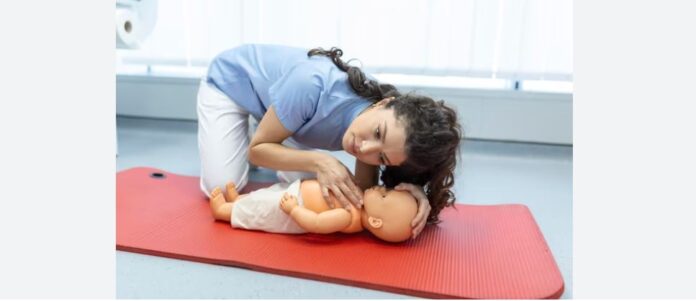Cardiopulmonary Resuscitation is a vital skill that can help save lives in emergencies. When someone suffers a cardiac arrest or stops breathing, every second counts. Performing CPR can help circulate oxygenated blood to vital organs and keep the person alive until medical professionals arrive. However, many people hesitate to perform this emergency procedure due to a lack of knowledge or fear of causing harm. This is why it is essential to understand the fundamentals of first aid cpr training and be prepared to respond to emergencies. This article will discuss the basics of emergency breathing procedures and how you can apply life-saving techniques in critical situations.
Understanding Cardiopulmonary Resuscitation
It involves a combination of rescue breathing and chest compressions. When someone’s heart stops beating, their body no longer receives oxygen. Rescue breathing provides the person with oxygen, while chest compressions help to circulate oxygenated blood to their organs. Together, these two techniques can help to keep someone alive until medical professionals arrive. It is essential to perform rescue breathing and chest compressions correctly to ensure the person’s best chance of survival.
When to Perform
The procedure should be performed in an emergency where someone has stopped breathing or whose heart has stopped beating. Everyday situations that require CPR include drowning, heart attacks, choking, or electrocution. If you are unsure whether someone needs the emergency procedure, check for signs of life, such as breathing or movement. If there are no signs of life, begin the procedure immediately. Remember, the longer you wait to perform the resuscitation, the less likely the person will survive. Time is of the essence in emergencies, and taking quick action can make a significant difference in the outcome.
How to Perform
- Step 1: Call for Help
The first step in performing is to call for help. If you are alone, call 911 or your local emergency number. If someone is nearby, ask them to call for help while you begin the procedure. It is essential to have someone call for help as soon as possible, so medical professionals can arrive and take over. While waiting for help to arrive, continue performing the procedure to the best of your ability.
- Step 2: Check for Breathing
Always check to see if the person is breathing. Tilt their head back and listen for breathing. Look for chest movement and feel for air on your cheek. If the person is not breathing, immediately begin the emergency breathing technique to provide oxygen to the body and vital organs. Remember to remain calm and focused while performing the technique.
- Step 3: Perform Chest Compressions
To perform chest compressions:
- Position the palm of your hand in the middle of the individual’s chest, precisely between their nipples.
- Cover your first hand with your other hand and push down on the chest about two inches.
- Repeat this motion for 30 compressions at about 100 per minute.
- Step 4: Perform Rescue Breaths
To perform rescue breaths:
- Tilt the person’s head back and lift their chin.
- Pinch their nose closed and give two breaths into their mouth while watching for chest movement. If you are uncomfortable performing mouth-to-mouth, skip this step and continue with chest compressions.
- Remember, rescue breaths are essential for providing oxygen to the person’s body and should be performed if possible.
- Step 5: Continue the procedure
Alternate between chest compressions and rescue breaths. Repeat this pattern until medical professionals arrive or the person starts breathing independently. It is important to continue performing CPR until help arrives.
Conclusion
Skills such as first aid cpr training can save lives in an emergency. By understanding the fundamentals of emergency breathing techniques and practicing the technique, you can be prepared to help someone in need. Remember to call for help, check for breathing, perform chest compressions and rescue breaths, and continue CPR until medical professionals arrive. With these steps, you can handle an emergency.

